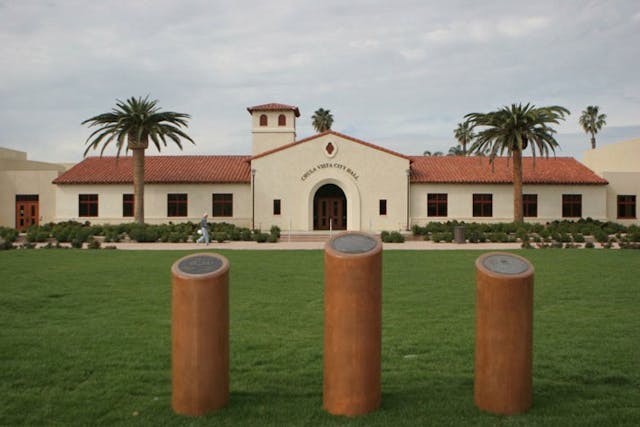The treaty that gave America a ‘legal’ land grabbing license
It may have been the biggest American Land Grab since the coming of Columbus.
And for those early Spanish-speaking inhabitants of California, for example, the Treaty of Guadalupe Hidalgo was as good as the countless of Indian Treaties the U.S. issued. In other words, to quote a Native American of the day, “they are not worth the paper they are printed on.”
Since the Treaty’s inception, both Native Americans and Mexican Americans (i.e. Chicanos, Latinos, etc.) have struggled to achieve political and social equality within the United States, often citing the Treaty as a document that promised civil and property rights. In addition, there have been hundreds of court cases citing the Treaty as a basis for land claims, but very few claimants have been successful in regaining their land. Adding insult to injury, former Mexican citizens, on the other hand, were considered foreigners by the U.S. settlers who moved into the new territories. A practice that still exists in America’s Great Southwest.
“Within a generation the Mexican-Americans became a disenfranchised, poverty-stricken minority, contends Dr. Richard Griswold del Castillo, professor and head of Chicana Studies at San Diego State University. “The Treaty that ended the U.S.-Mexican War and signed on February 2, 1848, it is the oldest treaty still in force between the United States and Mexico, and as a result, the United States acquired more than 500,000 square miles of territory and emerged as a world power in the late nineteenth century.”
The document that became the most devestating game-changer for Mexico’s future, was a vision come true for U.S. President James K. Polk, and his aggressive expansionist tendencies, who had fallen under the spell of the U.S. Manifest Destiny. In 1844, he offered to purchase what is now California from Mexico for $30 million. It was later revealed Polk was actually hoping his offer would be refused. It was. Then Polk hatched out his original acquisition plan, a war with Mexico.
It started with the US violating a buffer zone on the Texas border and when the Mexicans defended themselves, Congress agreed with Polk, that the US was being invaded so they deployed troops into Mexican territory in 1846 through 1849, eventually winning the war. Later, Polk got the land deal of the century. Mexico’s cost for losing the lopsided and unprovoked war, was indeed overwhelming-the country lost more than 50% of its former territory, including present day Texas, New Mexico, Arizona, California and most of Nevada, Utah, and part of Colorado.
“Ever since,” said a Texas Chicana museum curator, Dr. Jesus Medel. “ Seems that everything Mexican (with the exception of its cuisine) seems to irk many white Americans!”
That things became worse for Mexicans and those of Mexican descent, would be an understatement deluxe. The Californios and their paradise by the Pacific were no more.
Within a short period of time, both Mexican and Spanish landowners were kicked off their land or killed. Even some of the older families who had been here for more than 150 years were not shown any form of respect and were sent packing.
For some Native Americans the imaginary border ran between their lands, severing one group from another. As far as the U.S. is concerned, these Natives must go to an international border site before crossing into either country just to visit each other, celebrate a birthday, etc.
The Tohono O’odham Nation, for instance, has 28,000 enrolled members, of whom 1,400 live in Mexico. The tribe’s terrain once stretched from Hermosillo, 175 miles south of where the border is now, all the way north to the Gila River in Arizona and from Tucson west to the Colorado River. Today’s reservation encompasses a much smaller area, a 2.8 million-acre chunk of Arizona the size of Connecticut. But people who identify as tribal members still live as far as 90 miles south in Mexico.
Politically speaking, the word “treaty” is defined as “a formal agreement between two or more states in reference to peace, alliance, commerce, or other international relations.”
Peace? We beg to differ on this one. While most Tejanos and Californios enjoyed a somewhat tranquil way of life prior to the bloody US-Mexico War, what followed was nowhere near the original intent of the documents produced by the early US and Mexican hired politicos. Alliance between the two countries has also suffered at times while commerce has mostly favored rich U.S. companies.
A quick check on the social calendar of both lands indicates no big celebrations on deck for the Treaty’s 173rd anniversary.
It seems today’s EuroAmericans have completely forgotten about 1848 and how the U.S. came upon vast territories in the Southwest. Mexicans, however, have a different mindset.
Scholars tell of an apocryphal conversation between a Mexican diplomat and a U.S. diplomat where the Mexican diplomat tells the U.S. diplomat, “The trouble with you guys is you never remember, and we never forget.”






